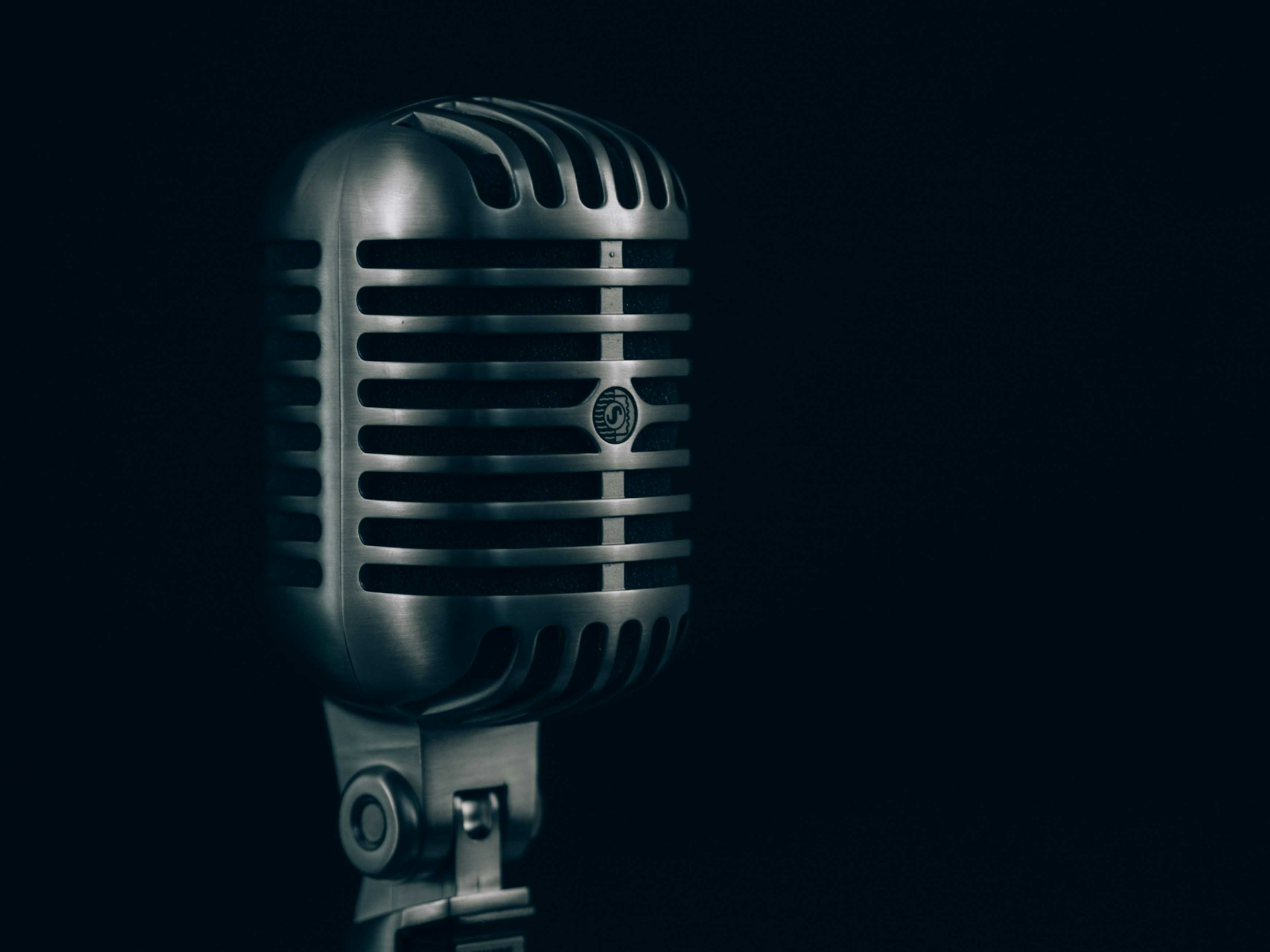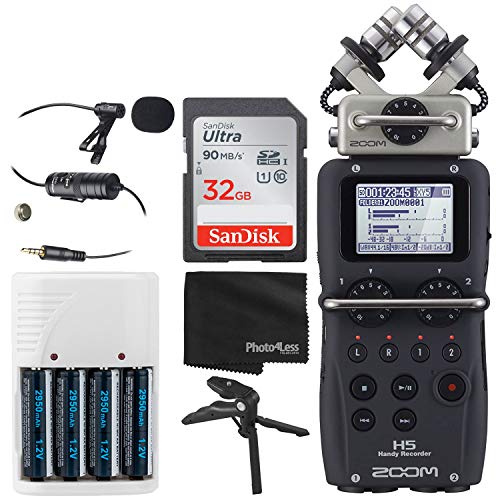Whether you’re diving into filmmaking or launching a podcast, the importance of audio quality cannot be overstated for enhancing production value. While many content creators manage with just a smartphone, upgrading your microphone can significantly elevate your project. However, navigating the world of microphones and choosing the best one for your needs can be overwhelming.
Let’s demystify and simplify the technical jargon and focus on the essentials. Whether you’re starting a YouTube channel, improving your podcast setup, or capturing a singer’s performance, there are key considerations before you go on your microphone shopping journey.
Understanding Your Microphone Usage
Begin by envisioning how you intend to use your microphone. Are you aiming to record vocals, instruments, or perhaps both? This initial step is crucial in determining the type of microphone that will best suit your needs.
Types of Microphones
Once you’ve identified your recording intentions, it’s time to explore the microphone options suitable for the task. Microphones are not one-size-fits-all; some excel in specific contexts. The two primary types are dynamic and condenser.
1.Dynamic Microphones:
- Ideal for noisy environments and versatile in various settings.
- Excellent for on-stage performances, street interviews, or capturing instruments like guitars and drums.
- Examples include the robust and versatile Shure SM58 or the higher-tier Telefunken M80 Dynamic microphone.

2.Condenser Microphones:
- More sensitive, suitable for capturing subtle details in vocals or instruments.
- Great for recording podcasts or singers in a controlled environment.
- A solid choice for home use is the Rode NT1-A, offering good performance across various applications.

Phantom Power for Condenser Microphones
Condenser microphones require an external power source known as phantom power, along with a preamp. This can be supplied by devices like an audio interface or mic pre-amp. Phantom power involves sending a DC voltage of +48V through the balanced cable to the microphone, commonly found in audio interfaces or portable recorders like the Zoom H5.
3.Ribbon Microphones:
- Less common and working on a different principle, usually a sub-type of dynamic microphones.
- Historically used in early broadcasting and making a comeback with sturdier builds in newer models.
- Examples include the AEA R84 Series and more affordable options like the Studio Electronics X1S. (products below).

Choosing Between USB and XLR Microphones
- USB Microphones: Convenient, easy to use, and generally more affordable. Suitable for podcasts or voiceovers.
- XLR Microphones: Provide higher audio quality, especially for recording music. They require an audio interface but deliver superior performance.
Understanding the differences, USB microphones come with a built-in analog-to-digital converter (ADC) that may not always be optimized for your specific recording needs. In contrast, XLR microphones lack this feature and usually have a balanced analog output stage for better noise rejection. Noise rejection is the ability of a circuit to isolate an undesired signal component from the desired signal component

Understanding Microphone Characteristics:
Once you’ve identified the purpose and environment for your microphone usage, the next crucial step is to consider what you want your microphone to capture. This decision revolves around microphone polar patterns, also known as recording patterns, which dictate the directionality of sound pickup.
Microphone Polar Patterns:
Microphone polar patterns, often depicted on directivity charts, determine the area from which a microphone captures sound. While the terminology may seem intimidating, it boils down to one question: where do you want the microphone to record?
- Cardioid: This heart-shaped pattern captures sound from the front and sides, making it ideal for focused recording.
- Omnidirectional: Captures sound from all directions, offering versatility in recording environments.
- Super-cardioid and Bidirectional: Patterns like these have directional characteristics, and their names provide clues to their shapes.
Microphone Frequency Response:
Frequency response gauges how accurately a microphone reproduces the signals it picks up. In an ideal scenario, the microphone converts a sound into an electronic signal with perfect fidelity. Frequency response graphs visually represent how well the microphone reproduces different tones. Variances in the graph indicate dips or humps, showcasing weaker or stronger reproduction of specific frequencies.

Microphone Sensitivity:
Sensitivity, measured in millivolts or dBV, indicates the electrical output for a given acoustic input. Higher sensitivity means the microphone requires less gain or amplification for recording. Understanding sensitivity helps in choosing the right microphone for capturing quiet sounds. Additionally, the maximum sound pressure level (Max SPL) signifies the threshold before audio distortion occurs, though microphones rarely break due to exceeding this level.

Improving Recording Quality:
To enhance recording quality, consider the following tips:
- Acoustic Room Treatment: Properly treating your recording environment is crucial. While commercial acoustic treatment is ideal, budget-friendly alternatives like sound isolating shields or blanket forts can yield improvements.
- Pop Filters and Shock Mounts: Pop filters diffuse air pressure from vocal sounds, reducing unwanted popping sounds. Shock mounts, common in studio-style microphones, help minimize vibrations from handling or the environment.
- Lavalier Mic Placement: Carefully position lavalier mics to avoid unwanted thumps, considering their small and unobtrusive design.
- Shotgun Mic Techniques: For shotgun microphones, pointing them downward towards the chest minimizes background noise, particularly useful when recording people on camera.
- Cloudlifter for Dynamic Mics: Low-sensitivity dynamic mics benefit from devices like the CL-1 Cloudlifter, which boosts the audio signal before reaching the recording interface.

Microphones for Remote Work:
Considering the rise in remote work, USB microphones and gaming headsets offer practical solutions for improved audio quality during virtual meetings and conferences.
In the era of remote work, USB microphones and headsets emerge as valuable tools for enhancing audio quality during virtual meetings and conferences. USB microphones, known for their convenience and affordability, provide a straightforward solution to elevate the audio experience in online communication.
Additionally, headsets equipped with integrated microphones offer a seamless, all-in-one solution, eliminating the need for separate headphones and microphones. These headsets are particularly advantageous for users valuing simplicity, delivering clear audio while ensuring an immersive listening experience. For remote workers seeking an effective balance between ease of use and noticeable audio enhancement, USB microphones and headsets present reliable options.
Related: The 3 Best Gaming Headsets For 2024

FAQs:
Does Cable Quality Matter?
For short cable lengths and USB microphones, cable quality has minimal impact on audio quality.
Do I Need an Audio Interface?
Unless using USB microphones, an audio interface is necessary for most microphones with analog (XLR) connections. Microphones with XLR connections typically require an audio interface. The Focusrite Scarlett 2i2 is a cost-effective option providing phantom power for condenser microphones. For on-location recording, portable recorders with XLR inputs are also suitable.




